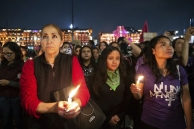Explainer: Abortion Rights in Latin America
Explainer: Abortion Rights in Latin America
AS/COA Online covers the expansion of abortion decriminalization in Latin America in the twenty-first century.
This article was originally published on June 28, 2022 and has since been updated.
Until it was overturned on June 24, 2022, the U.S. Supreme Court decision in Roe v. Wade stood out not just in the Americas, but in much of the world, for establishing abortion as a constitutional right. For most of the nearly five decades Roe was in force, the majority of Latin American countries offered little in the way of abortion rights or access. Most provided limited access in cases of rape or risk to the mother’s life, but others, such as the Dominican Republic and El Salvador, have a complete ban on the procedure. And while there were places—such as Cuba (1965), Mexico City (2007), and Uruguay (2012)—that took steps toward legalization, up until 2020 some 97 percent of Latin American women lived in countries with severe abortion restrictions.
That changed in December of 2020 when Argentina legalized abortion. Since then, Mexico and Colombia decriminalized the procedure as well, meaning three of the four most populous countries in Latin America have now done so. Also, in September 2023, Brazil’s Supreme Court opened a session that will decide whether to implement a nationwide legalization of the procedure up to 12 weeks into pregnancy.
These countries in Latin America follow a global trend that has seen more than 30 nations expand abortion access since 2000.
But not everyone is heading in the same direction. Nicaragua, Peru, and the United States are three of the four countries worldwide that have recently rolled back access. And with Argentina electing anti-abortionist Javier Milei to the helm, that country, too, could see reproductive rights under threat.
AS/COA Online explores the expansion of abortion rights in Latin America in the twenty-first century, as well as examples of countries taking restrictive steps.
EQUIS’ Ana Pecova explains why Mexico’s laws fall short when it comes to stemming violence against women and how to turn the tide.
After a 10-month process, the draft is in. Chileans will vote for or against the new constitution in a referendum slated for September 4.











